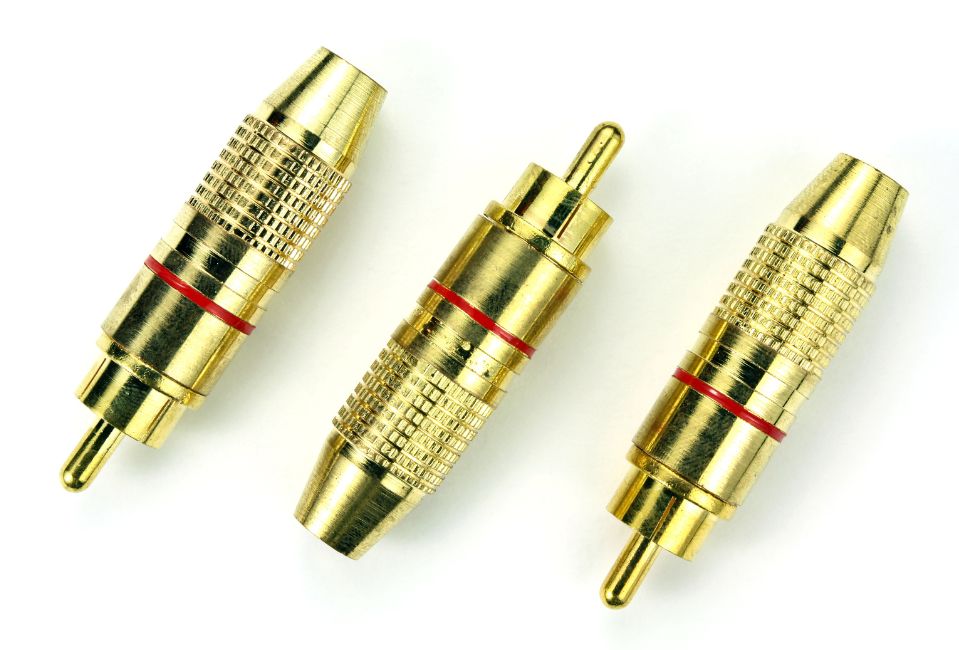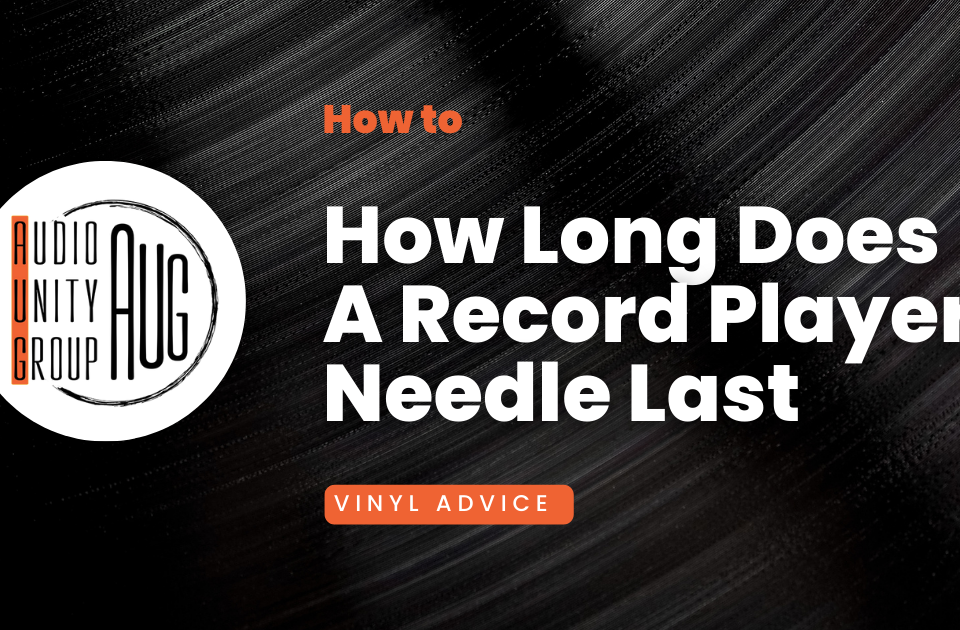
What Is Turntable Anti-Skating: Vinyl Plant Guide
April 30, 2023Best Record Player with Preamp: Top Picks for 2025
May 10, 2023Last Updated on June 9, 2023 by Tom S. Ray
Phono Vs Line Signal: All You Have To Know
Vinyl music has been a staple of the audio landscape for years, and understanding the difference between PHONO and LINE signals is crucial to getting the most out of your vinyl listening experience.
Whether you’re an experienced audiophile or just starting on your journey into turntables, it’s important to understand these two different types of signal inputs and outputs in order to get great sound from your system.
In this blog post we’ll explore phono vs line signals so that you can make informed decisions when setting up a phonograph system.

Understanding Phono And Line Signals
It is essential to understand the differences between a PHONO signal, coming directly from a turntable’s cartridge, and a LINE signal, an amplified version of the former.
Definition And Explanation Of Phono And Line Signals
PHONO signals are small electrical signals generated by the needle in a turntable when it comes into contact with a vinyl record. This signal is then passed through a preamplifier, or ‘phono stage’, to boost its voltage and prepare it for further amplification.
However, this amplified PHONO signal still needs further boosting before it can be used with most audio equipment such as amplifiers and receivers.
LINE signals on the other hand are already strong enough to output directly without additional amplification. Examples of these include CD players, iPods and streamers which have pre-amplified line-level outputs that do not require an extra phono stage for use in standard stereo systems.
Differences Between Phono And Line Signals
Phono and line signals are two different types of audio signals that can be used for music listening. A phono signal comes directly from the turntable cartridge and is much weaker than a line-level signal.
This means it needs additional amplification before it is suitable for use with most audio equipment, such as powered speakers or CDs.
The difference between these two kinds of signals also extends beyond their strength – they also differ in technical aspects such as voltage levels and frequency response.
When using Bluetooth or powered speakers, the differences in sound quality between a phono and line signal will become more pronounced due to the higher output power associated with line level signals.
Additionally, because of potential mismatches in impedance between devices handling either type of signal, connecting them can lead to noise issues which may degrade overall sound performance if not correctly accounted for beforehand.
To ensure optimum sound quality when playing music regardless of whether you’re using a phono or line-level source, selecting appropriate cabling options – especially at shorter distances – has been known to yield positive results by providing proper impedance matching while still reducing possible background noise interference when amplifying any kind of low-level output from vinyl records or other sources with sensitive circuitry .

Technical Differences Between Phono And Line Signals
The technical differences between PHONO and LINE signals include varying voltage levels and frequency response, as well as impedance matching to reduce noise.
Voltage Level And Frequency Response
Voltage level and frequency response are two of the primary technical factors to consider when choosing between Phono and Line signals. The strength or output volume of a Phono signal ranges from 0.0002 Volt up to about 0.007 Volt, which is considered lower than that of a standard Line signal.
The frequency response for a Phono signal is usually worse than that for a Line signal because it needs to be activated by an RIAA equalization curve (which further reduces bass frequencies).
This means that if connecting your turntable directly with equipment inputted on line level, you will likely notice audio quality loss due to lacking bass frequencies in the sound.
To optimize sound quality without losing these low-end frequencies, a phono preamp can boost the voltage while preserving fidelity, allowing you to connect these weaker signals into devices with higher voltage line inputs.
Impedance Matching And Noise Reduction
If you want to get the best audio quality from your sound system whether it be for home listening or in a professional setting, then proper impedance matching and noise reduction are essential.
Impedance is essentially an electrical resistance that can affect how much power passes through a device at different frequencies; this affects everything from microphone input to turntables.
Matching the impedance of devices together helps ensure that there aren’t any losses as signals travel across components within your setup. This becomes especially important when dealing with phono and line signals since they operate on different levels with different requirements for achieving optimal performance.
Noise reduction is just as important, particularly when talking about phono signals which are much more susceptible to interference compared to their line signal counterparts because the output voltage level of a vinyl disc (phono) is so low relative to other commercial sources such as CD’s and television sets (line).
By utilizing properly designed preamps with good noise shielding, we’re able to reduce unwanted background hiss coming from our equipment while also amplifying weaker transmissions from lower-level analog sources like vinyl records.

Using Phono And Line Signals
The types of audio source as well as the available inputs on an Audio-Technica turntable or amplifier must be considered when connecting components and selecting between phono and line signals.
Applications Of Phono And Line Signals
The phono signal, which comes directly from a turntable’s cartridge, is commonly used for playing vinyl records. The drivers built into the stylus of the cartridge vibrate in response to the grooves on the record’s surface, producing an audio signal that needs to be equalized by a Phono Preamp before it can be played back.
Meanwhile, line signals are amplified versions of these phono signals that are already equalized and ready for use with any type of sound systems or equipment requiring an input (e.g., amplifiers, receivers).
An Audio-Technica turntable has a PHONO/LINE switch at its back which lets users choose between sending either their phono or line signal output depending on what equipment they have available or would like to use.
Using their “Line” setting leverages Audio-Technica’s RIAA Equalization circuitry without needing additional outboard components typically needed when using a Phono input–provided your amplifier has adequate Line level inputs (not all do!).
Factors To Consider When Choosing Between Them
When choosing between phono and line signals, there are several important factors to consider. Audio equipment is the most obvious factor; if you’re connecting your turntable directly to your amplifier or stereo receiver, then you’ll need a phono input.
If not, such as when connecting a CD player or an MP3 player, you’ll need line inputs. Additionally, it is essential to think about the type of sound that you wish to achieve.
Phono signals offer unique vinyl sound quality while line level provides convenience and flexibility due to its standardized output volume across audio sources. Lastly, it is important to also take into account what kind of music that one wishes listen; for example classical music may require a more nuanced audio signal which can be provided by boosting the original low-leveled phonograph signal via RIAA equalization only available through this type of connection.
Phono Vs Line: Which Is Better?
It can be difficult to decide which signal works best for your vinyl setup, as each person’s audio system and personal preferences may lead to two different answers.
Personal Preferences And The Audio Equipment
When it comes to the choice between phono and line signals, there are many factors to take into account. Firstly, musical genre can be a determining factor for which signal one should use.
Generally speaking, line inputs will be better for music with lots of bass frequencies like rock or hip hop as these signals are pre-amplified, whereas a warm analog sound might suit acoustic folk music or jazz more using a phono input.
Additionally, vinyl records tend to suffer from some amount of high frequency loss due to age and wear so it might not fare well on a line input unless you have high end equipment that leans toward enhancing details in treble tones.
The quality of your audio equipment is also important here – if you have an entry level stereo receiver then chances are it won’t have much room on the vinyl side since they typically don’t come with builtin preamps; in this case you would need an external unit that acts as an amplifier and equalizer to boost the signal output from your turntable’s phono cartridge before connecting it straight to an input labeled “line” somewhere on the back that lets us switch between phono/line manually (provided most turntables have this switch).
Final Thoughts And Recommendations.
At the end of the day, it all boils down to personal preferences and what type of audio equipment you have. There is no clear winner between phono and line signals, as both have their own unique characteristics that have different applications.
If your sound system doesn’t have a built-in phono preamp, then you’ll need one to boost the signal from your turntable’s cartridge to line level if you want to connect it directly.
As well as cleaning your stylus, remember to clean your cables and phone- line in.
But if you already own an amplifier or stereo receiver with a built-in phono stage, switch at the back that lets us switch between Phono and Line inputs – then go for it! However do bear in mind that when using a relatively low output moving magnet (MM) cartridges on turntables utilizing RIAA equalization compared to line inputs – there may be reduced bass signal so ensure any powered speakers are equipped accordingly.
Finally look out for noise levels coming from those components which could affect overall sound quality – but this can easily be sorted out by ensuring everything’s connected properly without any loose cables or contacts [keywords removed: H1 headers].
Thanks for reading.
Tom
FAQ
What’s the difference between line input and phono input?
The main difference between line input and phono input lies in the signal level. A line input is designed to accept a higher level signal, typically from devices like CD players or MP3 players, while a phono input is specifically designed for the lower level phono signal output from a turntable’s phono cartridge. Connecting a turntable to a line input without a phono preamp would result in weak and imbalanced sound.
Why is a phono signal much weaker than a line signal?
A phono signal is much weaker than a line signal due to the way vinyl records are produced. The grooves on a record require reduced bass and increased treble to fit properly, so the phono signal output from a turntable’s cartridge carries these characteristics. The phono preamp, or phono stage, amplifies the phono signal while also applying the RIAA equalization curve to restore the original sound balance.
What is a phono preamp, and why do I need one?
A phono preamp, also known as a phono stage, is a device that amplifies the phono signal output from a turntable’s phono cartridge and applies the necessary RIAA equalization. This process brings the phono signal to a line level, allowing it to be properly played through an amplifier or receiver’s line input. If your turntable does not have a built-in phono preamp and your amplifier or receiver does not have a designated phono input, you will need an external phono preamp to properly amplify and equalize the phono signal.
Can I connect a turntable with a built-in phono preamp to a line input?
Yes, you can connect a turntable with a built-in phono preamp to a line input on a stereo receiver or amplifier. The built-in phono preamp amplifies and equalizes the phono signal to a line level, making it compatible with the line input. Just make sure to switch the turntable’s output from phono to line if it has a phono/line switch.
Can I damage my equipment if I connect a phono output to a line input without a phono preamp?
Connecting a phono output to a line input without a phono preamp will not damage your equipment, but it will result in weak, distorted, and imbalanced audio output. To properly amplify and equalize the phono signal, it should pass through a phono preamp before being connected to a line input.
Can I connect a line output device, like a CD player, to a phono input?
Connecting a line output device to a phono input is not recommended. The phono input is designed for the lower level phono signal and will greatly amplify a line level signal, resulting in distortion and potential damage to your audio equipment. Always connect line-level devices to line inputs.
What happens if I connect a turntable with a built-in phono preamp to a phono input?
Connecting a turntable with a built-in phono preamp to a phono input will result in double amplification and equalization of the phono signal, causing distortion and poor audio quality. If your turntable has a phono/line switch, switch it to the “phono” position before connecting it to the phono input. If it does not have a switch, you should only connect the turntable to a line input.
How can I tell if my turntable has a built-in phono preamp?
Turntables with built-in phono preamps typically have a phono/line switch or a separate line output. Consult your turntable’s manual or check the manufacturer’s website if you’re unsure. If your turntable lacks these features or specifically states that it requires a phono preamp, then it does not have a built-in phono preamp.
How do I know if my amplifier or receiver has a dedicated phono input?
Check the back panel of your amplifier or receiver for an input labeled “Phono,” “Phono In,” or “Turntable.” If your amplifier or receiver has this input, it has a built-in phono preamp and can be directly connected to a turntable’s phono output without the need for an external phono preamp.
Can I use an external phono preamp even if my amplifier or receiver has a phono input?
Yes, you can use an external phono preamp even if your amplifier or receiver has a built-in phono input. Simply connect the turntable’s phono output to the external phono preamp, and then connect the phono preamp’s line output to one of the line inputs on your amplifier or receiver. This may be beneficial if the external phono preamp offers better sound quality or additional features compared to the built-in phono preamp in your amplifier or receiver.













